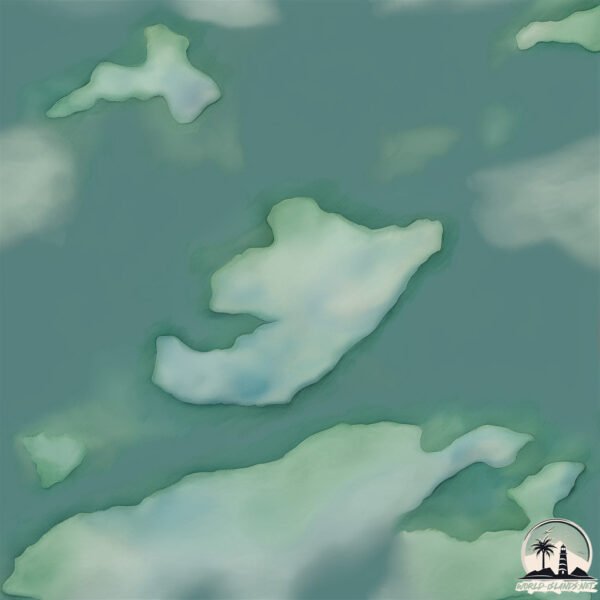Welcome to Hiudobro , a Polar island in the South Pacific Ocean, part of the majestic Pacific Ocean. This guide offers a comprehensive overview of what makes Hiudobro unique – from its geography and climate to its population, infrastructure, and beyond. Dive into the details:
Geography and size of Hiudobro
Size: 0.322 km²Coastline: 3.1 kmOcean: Pacific OceanSea: South Pacific OceanContinent: South America
Hiudobro is a Tiny Island spanning 0.322 km² with a coastline of 3.1 km.
Archipel: –
Tectonic Plate: South America – A major plate covering the South American continent and part of the Atlantic Ocean, known for the Andes mountain range and significant seismic and volcanic activity.
The geographic heart of the island is pinpointed at these coordinates:
Climate and weather of Hiudobro
Climate Zone: PolarClimate Details: TundraTemperature: Cold
Climate Characteristics: The tundra climate features long, extremely cold winters and short, cool summers. Vegetation is limited to mosses, lichens, and small shrubs due to the low temperatures and short growing seasons. Biodiversity is low, but some specialized species thrive.
Topography and nature of Hiudobro
Timezone: UTC-04:00Timezone places: America/La_PazMax. Elevation: 8 m Mean Elevation: 5 mVegetation: Herbaceous CoverTree Coverage: 83%
The mean elevation is 5 m. The highest elevation on the island reaches approximately 8 meters above sea level. The island is characterized by Plains: Flat, low-lying lands characterized by a maximum elevation of up to 200 meters. On islands, plains are typically coastal lowlands or central flat areas.
Dominating Vegetation: Herbaceous Cover
Vegetation: 1 vegetation zones – Minimal Diversity Island
Infrastructure and Travelling to Hiudobro
Does the island have a public airport? no .
Does the island have a major port? no .
The mean population of Hiudobro is 1 per km². Hiudobro is Uninhabited. The island belongs to Chile .
Continuing your journey, Latorre is the next notable island, situated merely km away.
MINAS COBRE HUIDOBRO
Huidobro es un pequeño pueblo, con apenas un par de casas habitadas y una recuperada iglesia románica, emplazado en uno ...
MINAS COBRE HUIDOBRO
Huidobro es un pequeño pueblo, con apenas un par de casas habitadas y ...
Huidobro es un pequeño pueblo, con apenas un par de casas habitadas y una recuperada iglesia románica, emplazado en uno ...
(Ghost) Riders In the Sky (American Outlaws: Live at Nassau Coliseum, 1990)
The Highwaymen performing "Ragged Old Flag" from American Outlaws: ...
The Highwaymen performing "Ragged Old Flag" from American Outlaws: Live at Nassau Coliseum, 1990 Listen to The ...
Heart of Clojure 2019 - Ramón Huidobro - How teaching kids to code can make you a better developer
Kids have this magical ability to take something you think you ...
Kids have this magical ability to take something you think you understand well and turn it upside down by challenging norms.
Chile is classified as Emerging region: G20: Group of Twenty – Major economies comprising both developed and emerging countries, representing the world’s largest economies. The level of income is Upper middle income.
News – Latest Updates and Headlines from Hiudobro
Stay informed with the most recent news and important headlines from Hiudobro. Here’s a roundup of the latest developments.
Loading...
Please note: The data used here has been primarily extracted from satellite readings. Deviations from exact values may occur, particularly regarding the height of elevations and population density. Land area and coastline measurements refer to average values at mean high tide.

